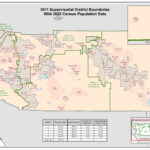
Skepticism about the El Niño weather this winter abounds. Although rainfall on the Hill exceeded historic averages for the period from July 1 through Jan. 31, the storms were neither relentless nor overwhelming.
The early January snowstorm dropped more than a foot of snow, nearly 2 feet in some areas; still, February has felt much more like April than winter.
But National Weather Service Meteorologist Alex Tardy urges Southern Californians to be patient. March and April are likely to be unusually wet.
“El Niño has definitely not gone,” he said in a video last week. The central and eastern Pacific Ocean is very warm and temperature differences increased again last week.
“Some of our wettest months are February and March,” he stressed. “March can be a very wet month. Be careful about prematurely giving up.”
Sea surface temperatures are still very similar to the last strong El Niño in 1997-98.
Last fall, several storms lined up and aimed at Southern California, but an unusually stable high-pressure zone was centered over the western United States deflecting these storms further north.
Rainfall in Northern California has exceeded averages. However, some places in Southern California, such as San Diego County and the Riverside County mountains, have received above-normal rain, also.
In Idyllwild, 15.25 inches of rain have fallen, and the normal from October through January is 12.33. In the past two strong El Niño periods (1982-83 and 1997-98), more than 27 inches of rain fell between February and May.
Currently, the NWS Climate Prediction Center is forecasting that a major storm will arrive in late February or early March. The expectation is that the high-pressure zone will shift further north, allowing strong Pacific storms to move across Southern California.
“Most of California, through March, has a high probability of above-normal precipitation,” Tardy said. “This El Niño, at the margin, looks comparable to the ’97-’98 pattern. It has not gone away. The potential still exists for storms from late February and March into April.”
Beyond April, the NWS CPC expects weather conditions to return to normal in late spring or early summer “…with a possible transition to La Niña conditions during the fall.”











Any significant El Nino precip will be blocked from the western US all spring and summer long! Why? Because your gov’t is droughting the western US to death with geo-engineering to drive people off the rural western mountains and into the midwest cities! Agenda 2030! Your weather is no longer God’s! Low wavelength transmitters scattered off west coast as well as throughout the US nudge the storm tracks either far north of western US as well as far south, inspite of El Nino!
Interesting theory. Big Foot riding a unicorn on a rainbow arc onto a space ship, is also an interesting theory.
Please provide supporting evidence in the form of statistics, photos, wiretaps, wiki leaks, causation (not correlation) for your theory, and I will do the same with my theory.